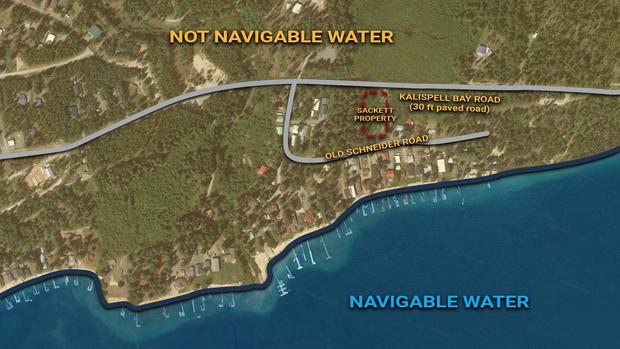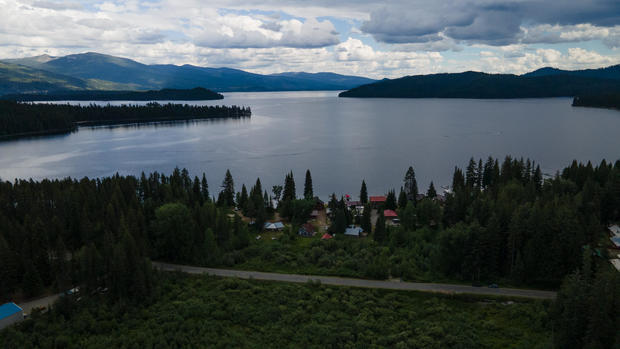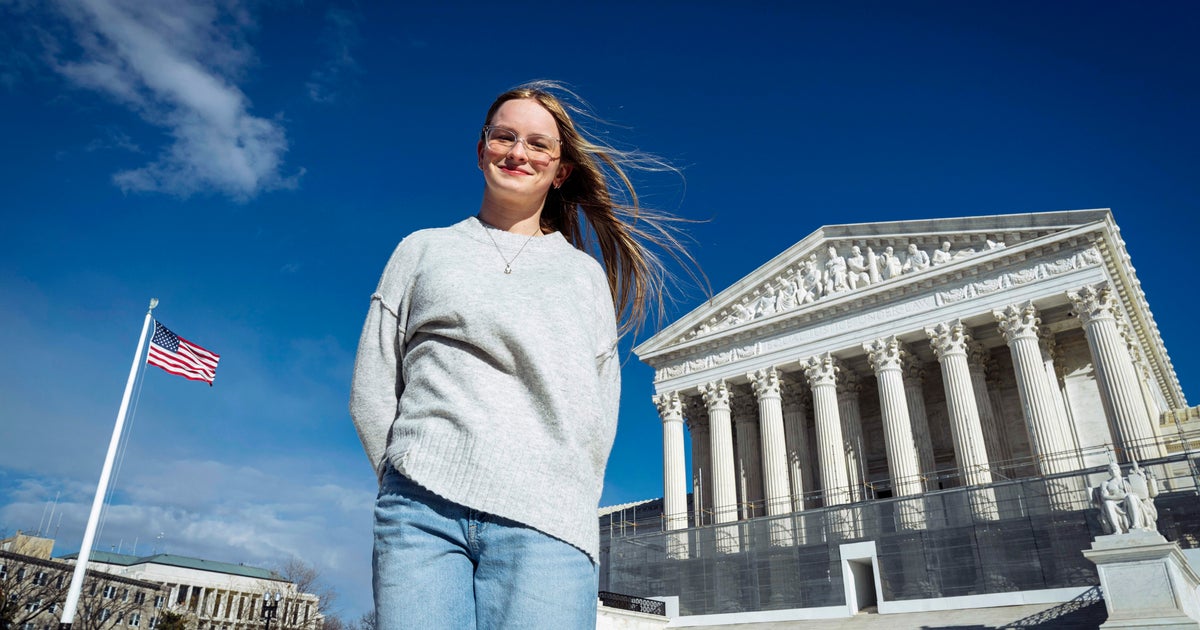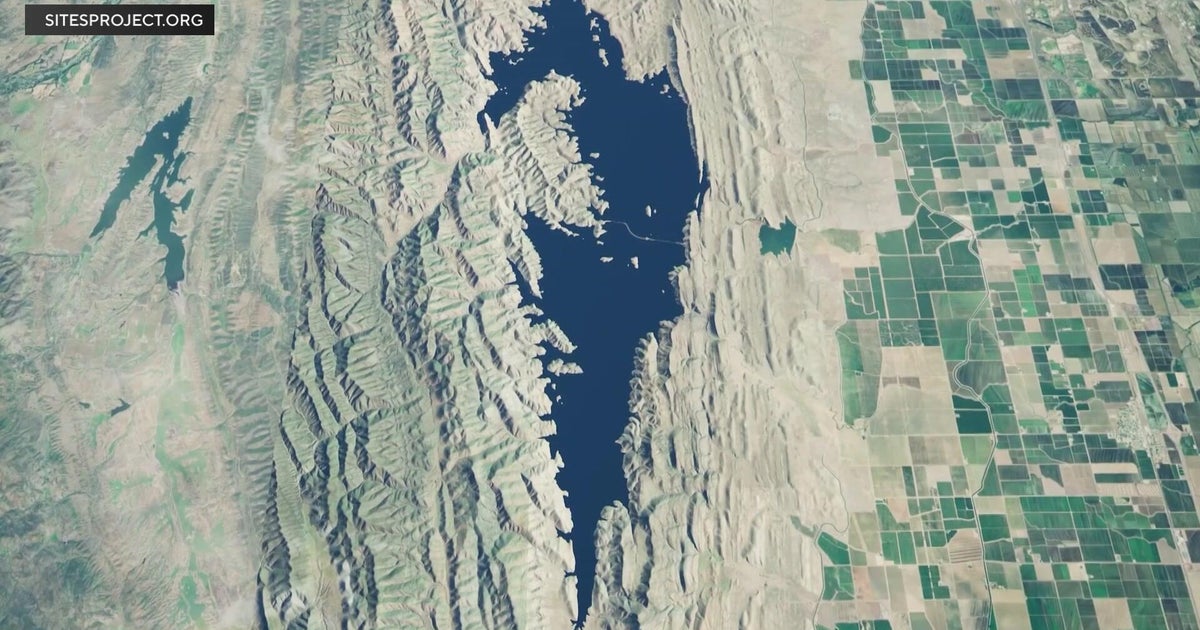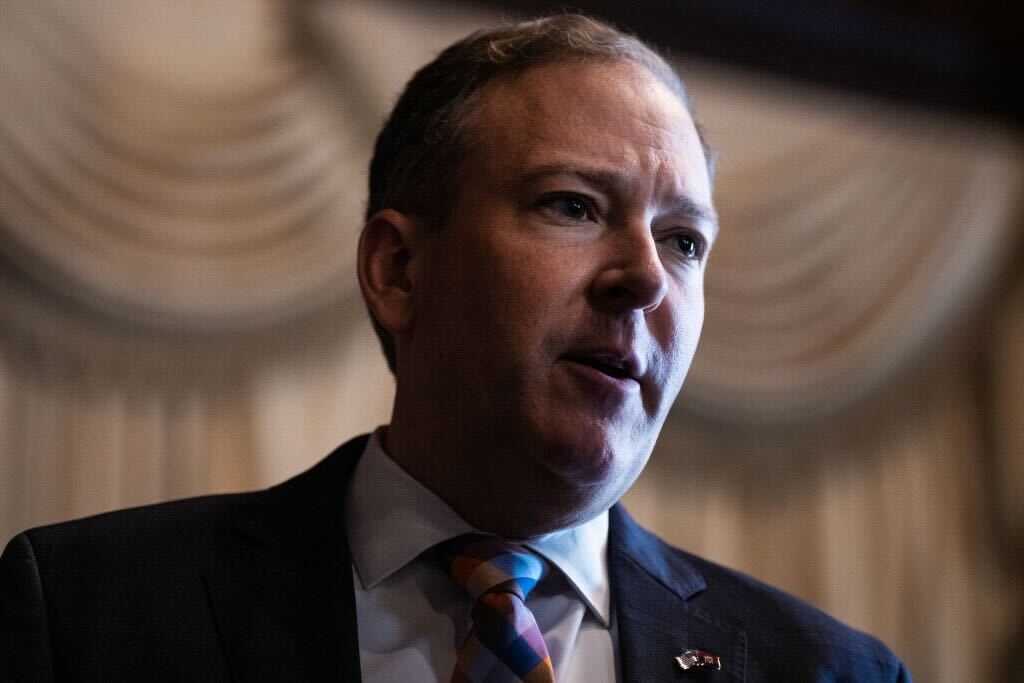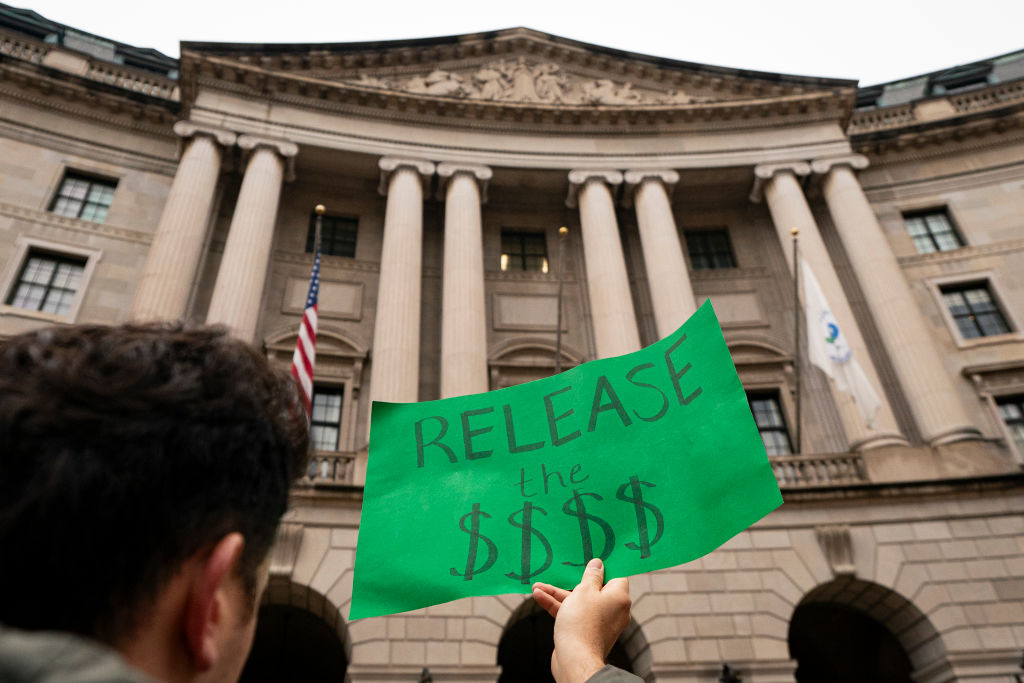Supreme Court rules against EPA in dispute over regulating wetlands
Washington — The Supreme Court on Thursday curtailed the Environmental Protection Agency's authority to regulate certain wetlands that qualify as "waters of the United States" under the Clean Water Act, curbing what has long been seen as a key tool to protect waterways from pollution.
The high court ruled against the agency in a long-running dispute with Idaho landowners known as Sackett v. EPA. In an opinion authored by Justice Samuel Alito, the court found that the agency's interpretation of the wetlands covered by the Clean Water Act is "inconsistent" with the law's text and structure, and the law extends only to "wetlands with a continuous surface connection to bodies of water that are 'waters of the United States' in their own right."
While the majority acknowledged that weather and climate events like low tides and dry spells can cause "temporary interruptions" between bodies of waters covered by the law, the court said that wetlands protected under the Clean Water Act should be otherwise "indistinguishable" from other regulated waters.
The Supreme Court's ruling reverses a decision by the U.S. Court of Appeals for the 9th Circuit, which sided with the EPA.
The court ruled unanimously in favor of the Idaho couple, Michael and Chantell Sackett, that brought the case, but split 5-4 in its reasoning. Joining Alito's majority opinion were Chief Justice John Roberts and Justices Clarence Thomas, Neil Gorsuch and Amy Coney Barrett. Justices Brett Kavanaugh, Sonia Sotomayor, Elena Kagan and Ketanji Brown Jackson concurred in the judgment.
In a concurring opinion authored by Kavanaugh and joined by the three liberal justices, Kavanaugh argued the "continuous surface connection" test adopted by the majority "departs from the statutory text, from 45 years of consistent agency practice, and from this court's precedents."
By narrowing the scope of Clean Water Act, Kavanaugh warned some long-regulated wetlands will no longer be covered by the law, which will have "significant repercussions for water quality and flood control" throughout the nation.
Wetlands separated by levees along the Mississippi River would not be subject to regulation under the Clean Water Act, Kavanaugh said, and federal protection of the Chesapeake Bay "might be less effective if fill can be dumped into wetlands that are adjacent to (but not adjoining) the bay and its covered tributaries."
"Put simply, the Court's atextual test — rewriting 'adjacent' to mean 'adjoining' — will produce real-world consequences for the waters of the United States and will generate regulatory uncertainty," Kavanaugh wrote.
The decision from the conservative court is the latest to target the authority of the EPA to police pollution. On the final day of its term last year, the high court limited the agency's power to regulate greenhouse gas emissions from power plants, dealing a blow to efforts to combat climate change.
That dispute involved the Clean Air Act, and the Supreme Court now has addressed the EPA's authority under the Clean Water Act, which regulates discharges of pollutants into what the law defines as "waters of the United States." Under regulations issued by the U.S. Army Corps of Engineers, "waters of the United States" is defined to include "wetlands" that are "adjacent" to traditional navigable waters.
President Biden criticized the Supreme Court's decision as "disappointing" and pledged to work with the Justice Department and relevant federal agencies to use their legal authority to protect the nation's waters. Mr. Biden said the ruling puts wetlands and connecting bodies of water at risk of "pollution and destruction."
"Today's decision upends the legal framework that has protected America's waters for decades," he said in a statement. "It also defies the science that confirms the critical role of wetlands in safeguarding our nation's streams, rivers, and lakes from chemicals and pollutants that harm the health and wellbeing of children, families, and communities."
The long-running case dates back to 2007, when the Sacketts began building a home on a lot in a residential neighborhood near Priest Lake, Idaho. After the Sacketts obtained local building permits and started placing sand and gravel fill on the lot, the EPA ordered the work to stop and directed the couple to restore the property to its natural state, asserting the land contained wetlands subject to protection under the Clean Water Act.
Facing thousands of dollars in penalties, the Sacketts sued the EPA in 2008, arguing the agency's jurisdiction under the law did not extend to their property.
The agency moved to dismiss the suit, and a federal district court in Idaho granted the request. The U.S. Court of Appeals for the 9th Circuit affirmed, but the Supreme Court revived the suit and sent the dispute back to the lower courts.
On its second round through the lower courts, the district court ruled for the EPA, finding that the agency had the authority to regulate the wetlands purported to be on the Sacketts' lot under a test laid out by Justice Anthony Kennedy in a 2006 case involving the Clean Water Act.
In the 2006 case, Rapanos v. United States, the court laid out two competing tests for determining whether wetlands can be regulated under the Clean Water Act. Under Kennedy's standard — applied by the lower courts in the Sacketts' legal fight — a wetland may be covered by the Clean Water Act if it bears a "significant nexus" with traditional navigable waters.
The 9th Circuit affirmed the district court's ruling, finding that the EPA has power over the wetlands. In its decision, the appeals court found the agency has jurisdiction over the Sacketts' property, which it described as a "soggy residential lot," because the wetlands on it were adjacent to a tributary that, together with another wetland complex, had a significant nexus to Priest Lake. The wetlands, the 9th Circuit found, "significantly affect the integrity of Priest Lake."
But Alito warned that the EPA's interpretation of the Clean Water Act, "nearly all waters and wetlands are potentially susceptible to regulation under this [significant nexus] test, putting a staggering array of landowners at risk of criminal prosecution for such mundane activities as moving dirt."
Wetlands make up 5.5% of land in the continental U.S., according to the EPA, and are considered some of "the most productive ecosystems in the world, comparable to rain forests and coral reefs."
Along with providing habitat to various plants and microbes, they are also vital in buffering flooding and erosion — a factor growing in importance as storms become more frequent and severe amid the deepening climate crisis. Humans modifying wetlands through construction and pollution are major stressors and can drastically change their ability to function or survive.
Jon Devine, director of federal water policy for the Natural Resources Defense Council, warned that the court's decision to narrow the EPA's authority over wetlands "could be catastrophic."
"Tens of millions of acres of wetlands that are currently protecting communities from flooding, helping to make sure that their drinking water supplies are cleaner, would be at risk of being filled in or polluted without any kind of environmental review beforehand," he told CBS News in an interview ahead of the decision.
Protecting these waterways, he said, is only becoming more pressing as climate change makes flooding, drought and other issues more intense.
"These things are small individually, but their impact is huge collectively," he said. "And that's why we need to prevent the kind of death-by-a-million-cuts that could be unleashed by an adverse decision here."
